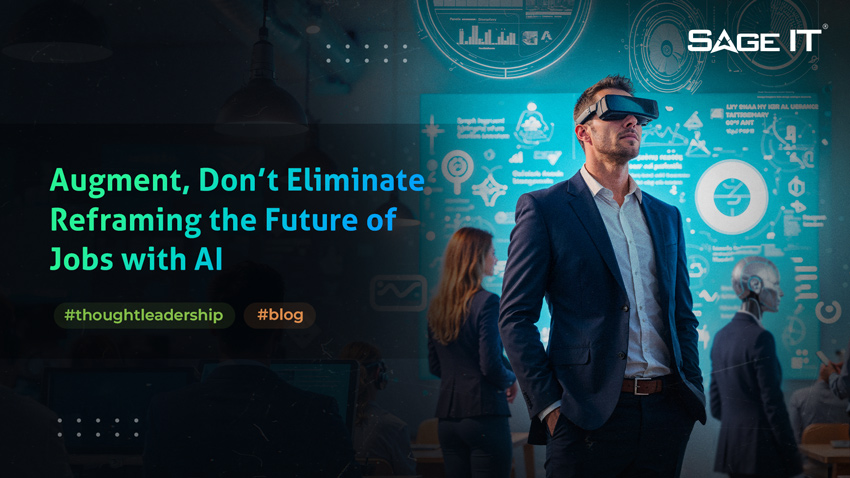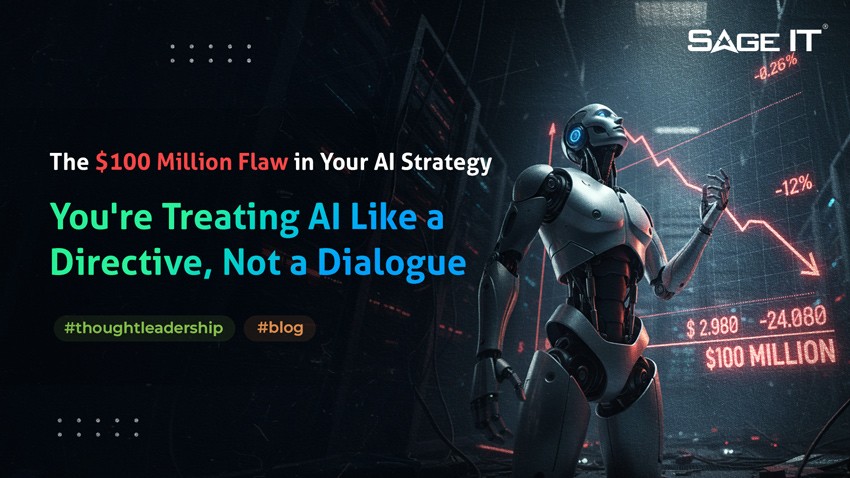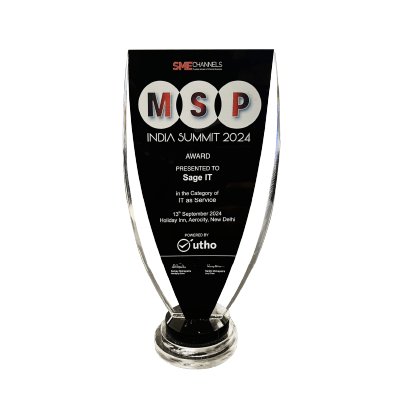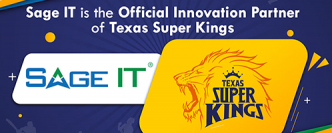Stop reading the headlines.
AI isn’t coming for your job; it’s coming for your limits.
AI isn’t coming for your job; it’s coming for your limits.
For many employees, “AI” still triggers fear: fear of being replaced, monitored, or made irrelevant. It’s a natural reaction to the endless loop of alarmist narratives about robots replacing humans.
But step inside the world’s most forward-thinking enterprises, and the real story emerges.
The organizations winning with AI aren’t cutting people out; they’re amplifying them and only replacing those unwilling or unable to learn and adopt AI in their work.
Global enterprises like Accenture have already made AI fluency a core expectation, embedding continuous learning into every role. They use AI to expand creativity, accelerate decisions, and remove friction so humans can focus on the work only they can do.
What looks like replacement from the outside is actually transformation from within.
This is the Augmentation-First Operating Model.
If AI is the next industrial revolution, then this model isn’t just a principle; it is the only ethical and sustainable strategy for intelligent enterprises.
From Automation to Augmentation: The Great Shift
In the early 2000s, automation was the goal. Businesses codified repetitive, rules-based tasks and shipped them to bots or offshore teams to cut costs.
That era was transactional, designed to cut costs rather than to create capability.
AI, especially generative and predictive AI, changes the equation. It doesn’t just follow rules; it recognizes patterns, reasons across data, and collaborates in language. It doesn’t replace workers; it replaces tasks and frees people to evolve their roles.
We’re not witnessing job elimination. We’re witnessing job evolution. The goal is not to substitute humans, but to make them better at what only they can do.
This is the mindset every executive now needs to lead responsibly and competitively.
The Augmentation Dividend: Three Roles Reimagined
AI’s impact isn’t theoretical; it’s already transforming everyday work.
- The Financial Analyst
Then: Manually compiling data from five systems into monthly reports.
Now: AI automates 80% of data gathering, letting analysts model scenarios, advise leaders, and generate strategic insight.
Outcome: Faster decisions, deeper analysis, and elevated business impact.
- The Customer Support Agent
Then: Handling repetitive billing and status queries.
Now: AI handles routine interactions, while agents focus on escalations, customer retention, and complex troubleshooting.
Outcome: Lower burnout, higher NPS, better upsell potential.
- The Recruiter
Then: Screening 300+ resumes and coordinating interviews manually.
Now: AI surfaces high-fit profiles and automates scheduling, enabling recruiters to focus on engagement and onboarding strategy.
Outcome: Faster time-to-hire, improved experience, stronger pipelines.
These are just snapshots of a broader truth: in every case, the work didn’t disappear; it was reimagined.
The dividend isn’t fewer people. It’s better performance, faster innovation, and renewed human purpose.
Why This Matters for Every Leader?
These shifts aren’t isolated to a few roles; they redefine how leadership itself must evolve. The debate about AI and jobs isn’t about technology, it’s about talent strategy.
Organizations that run automation-first playbooks will inevitably face:
Talent Attrition Risk: Loss of high-value tacit knowledge and expertise.
Innovation Ceiling: Erosion of hybrid human–AI ideation.
Regulatory Exposure: Unsupervised automation driving ethical and compliance risks.
Those adopting an Augmentation-First model will unlock:
Productivity Multipliers: A study from MIT Sloan found that when highly-skilled workers used generative AI appropriately, performance improved by nearly 40% compared with those who did not use it.
AI isn’t a cost lever; it’s a capability multiplier. The question isn’t how we automate faster, but how we scale human ingenuity.
Augmentation Requires Investment in People
Turning this vision into reality requires rethinking how we equip and empower people at every level.
At our company, we’ve embedded augmentation as the cornerstone of our AI operating model:
The message to our people is clear: Your job isn’t going away. It’s growing up.
A Framework for Augmenting Work
| Dimension | Ask This Question | Example Outcome |
|---|---|---|
| Relieve (Tactical) | What repetitive tasks can AI take off your plate? | Report generation, data entry |
| Refine (Tactical) | Where can AI help you make better decisions? | Predictive analytics, scenario modeling |
| Reframe (Strategic) | How does AI change the purpose of your role? | From operator to advisor |
| Reinvent (Strategic) | What new capabilities does AI enable? | Real-time personalization, multilingual translation |
Relieve and Refine deliver efficiency.
Reframe and Reinvent create differentiation.
That’s where the true value of augmentation lives.
But strategy alone isn’t enough. Culture determines whether augmentation thrives or stalls
Building an Augmentation-First Culture
Culture eats strategy, and AI strategy is no exception.
To shift from replaceable to empowered, organizations must build a culture that supports continuous learning and human–AI partnership:
When employees feel empowered to explore and experiment, augmentation becomes a shared movement, not a mandate.
And as that culture matures, it gives rise to a new generation of hybrid roles, where humans don’t just work with AI but work through it.
The Rise of New Hybrid Roles
As AI matures, new kinds of roles are redefining the workplace:
These aren’t futuristic ideas; they’re already appearing on job boards and in organizational charts.
The future isn’t human vs. AI. It’s human with AI, working symbiotically to achieve more than either could alone.
Which brings us to the new leadership mandate shaping this future.
Measure Return on Talent, Not Just ROI
The greatest mistake leaders can make today is trading long-term human ingenuity for short-term cost savings.
The smartest move? Retire the old ROI calculation for automation, and replace it with ROT: Return on Talent.
The mandate for modern leadership is clear: Stop measuring what you can eliminate, and start investing in what you can amplify.
When people are valued, equipped, and supported in an AI-powered world, they don’t just lead the future.
They design it.











